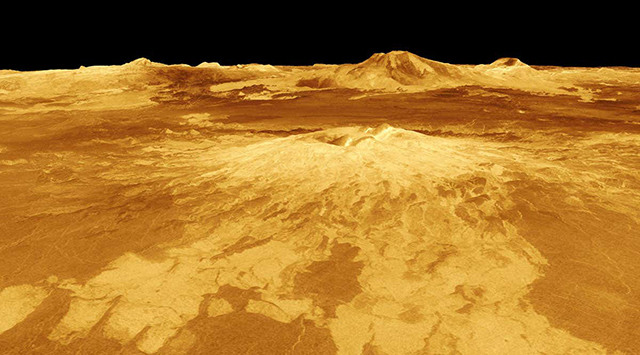Venus has dozens of active volcanoes, farting on the idea that its a dormant planet
Man! Here we were, so sure that Venus was a dormant planet. Nope. Nope! Quite the opposite. The son of a bitch has dozens of active volcanoes.
Technology Review:
An international group of researchers have identified 37 volcanic structures on Venus that were recently active and are likely still active today. The results, published Monday in Nature Geoscience, upend long-held assumptions that the second planet from the sun is largely dormant.
What we thought: Unlike Earth, Venus doesn’t have plate tectonics that are constantly moving and gradually shaping its surface, leaving many scientists to assume the planet had been inactive for perhaps the last half-billion years. But this assumption has never been truly tested, since the planet’s incredibly thick atmosphere and scorching temperatures have made it very difficult to study.
The new findings: They are focused around ring-like structures called coronae, upwells of volcanic material from the planet’s interior, which are a sign of geological activity. The researchers developed simulations of what the planet’s active coronae should look like based on thermal data collected by the European Space Agency’s Venus Express orbiter (whose mission ended in 2014). Using these simulations, the researchers had an idea of what surface characteristics to look for to identify active coronae. Specifically, they would have trenches around their outer rings and protuberances around the trenches’ edges.
The researchers then looked for these characteristics in infrared images of Venus’s topography, collected by NASA’s Magellan probe in the early ’90s. Altogether, they identified and mapped 133 corona-like structures, 37 of which were likely large volcanic hot spots that have erupted within the last couple of million years or so (very recent in geological time scales).
Most of the sites were located in a belt-like formation around the planet, which the researchers are calling the Ring of Fire. These coronae are much bigger than anything found on Earth—the largest, Artemis, stretches 1,300 miles in diameter. (The largest active volcano on Earth, Mauna Loa in Hawaii, is just 75 miles in diameter.)
Implications: The findings suggest the planet is more active than we thought, at least on the surface. But simulations of recent tectonic and magmatic activity on the surface cannot tell us anything specific about what’s actually happening deep inside Venus. The only way to confirm ongoing volcanic activity would be to study the planet through spacecraft missions that are capable of analyzing the surface. The new findings could help bolster support for one proposed NASA mission to map the surface of Venus and provide new insight into its geology.




